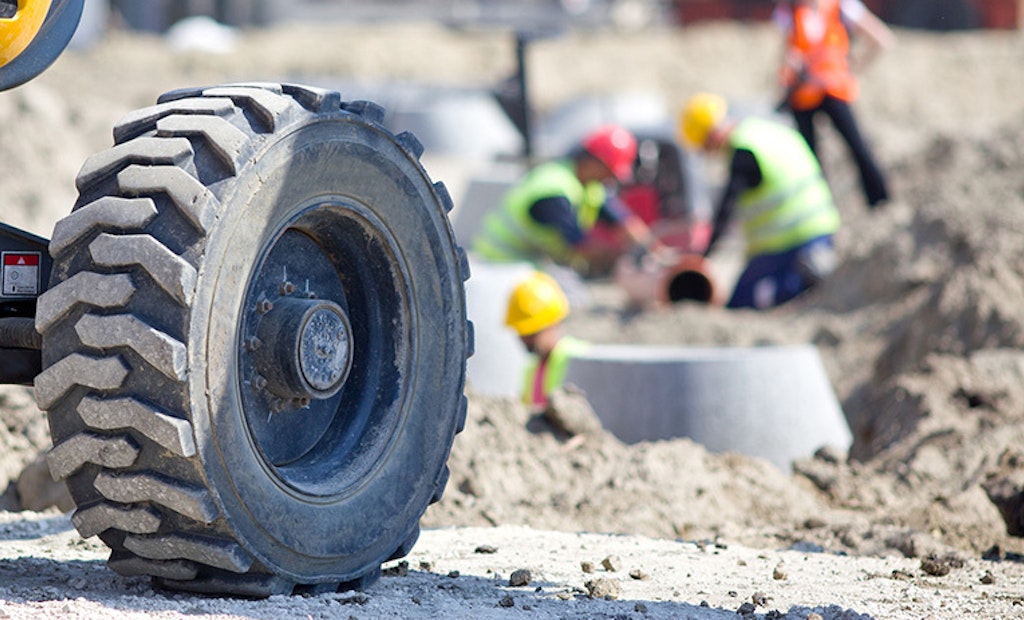Interested in Municipal/Industrial?
Get Municipal/Industrial articles, news and videos right in your inbox! Sign up now.
Municipal/Industrial + Get AlertsDo any of these workplace accidents have the potential to occur at your work site? Keeping your crew alert and communicating well is the best approach to staying safe, but accidents do happen. Here are some common ones, and tips on how to avoid them.
1. Slips and falls
Hazards such as slippery surfaces, cluttered walkways and uneven flooring are common causes of workplace injuries. Winter work comes with the added hazard of ice and snow.
As with any safety assessment, start with an audit and move to a plan of action. Begin by noting all potential tripping hazards. Eliminate the ones you can, and clearly mark the ones you can’t. To help make sure feet are as stable as possible so bodies stay upright, encourage employees to wear solid shoes: wide bases and thick, closed-toe uppers will help avoid any downers.
2. Machinery
We love the quality and efficiency of our mechanized work assistants, but keep a watchful eye on your hands and body. Any moving parts are potential hazards.
In the construction industry, those reporting workplace accidents commonly cite two issues: 1) machinery not properly maintained or operated; and 2) loose moving parts such as pulleys, chains and belts. Both are real threats to safety.
Stay safe with these tried-and-true protocols:
- Avoid loose clothing and contain long hair. Dangling objects will get caught. Sounds obvious until it happens.
- Check existing machine guards and engineer additional ones when possible. It doesn’t have to be fancy; it does have to be sturdy.
- Wear the right PPE that’ll keep you safe. For example: is there a potential for projectiles? Attach some side shields to your glasses.
- Know who is authorized to access machinery. Post those expectations at the workstation, and train anyone who works close by.
3. Vehicle incidents
Do you use any sort of vehicle in or around your workplace? Ranging from specialty vehicles like hydroexcavation trucks to forklifts, machines in motion come with risk of injury to the operator and those around them.
What causes these types of accidents? Investigations list culprits such as poor communication, falling objects from vehicles, unknown obstructions, unclear routes and overturned vehicles.
The biggest step toward any accident prevention is awareness and training. If you are working on or near heavy equipment, know potential malfunctions and catastrophes. Before stepping on site, have your certification and ample experience under your belt. When behind the wheel, you’re the “go/no-go” on this one. Be ready to bring the machine to a full stop if your gut says so.
Remember the buddy system? An effective spotter and operator will have a common plan they discussed at the beginning of the shift. Someone walking behind the paving machine? Crane moving close to overhead wires? “Hey, watch out!” The use of wireless headsets will promote quick and clear communication to avoid accidents on the job site.
4. Explosions and fires
Explosions and fires account for 3% of workplace injuries but have the highest casualty rate of all workplace accidents.
Causes include faulty or punctured gas lines, improperly stored combustible materials and open flames. Any of these on or near where you work? Then you’re probably already familiar with necessary care and response. Because combustibles can quickly overtake large spaces and release so much energy, regulated use and storage is clearly mandated. Fuel lines are constructed with accessible shut-offs. All hazardous chemicals, combustible or not, have specific storage and documentation requirements regulating their use.
While potentially disastrous, the accident rate is actually very low considering the prevalent storage and everyday use of fuel and chemicals. How many thousands of gallons of vehicle gas are being transported and stored this very moment? Humans have gotten good at managing these risks and developing procedures for safe handling and use.
5. Overexertion and stress
The costliest of all workplace injuries, overexertion and stress impact productivity the hardest. Complaints of back pain alone cost employers more than $50 billion annually over a collective 264 million lost workdays a year.
Overexertion is doing too much or using the body incorrectly. Repetitive tasks tend to use the same body motions that can take their toll over time. Less frequent activities like job site setup, and lifting or moving tools and equipment can tweak a joint or major muscle group.
To lessen their impacts, take frequent breaks from physically demanding tasks and use tools like manual or mechanical lifting aids for objects over a certain weight, like 50 pounds. That’s easy, right? Not always. So often we don’t think before we act, motivated to get the job done and move on. We’ve all experienced an extended workday with more to do than time to do it in. You’re short a person or there’s a an increase in workload. These are the times humans can excel at rising to the occasion and making it happen. Regardless of the circumstances, be aware of the workload’s demands on your body, especially in extreme temperatures — either hot or cold. Let your foreman know the situation and call for backup. The goal is for everyone to remain on the active list and not get benched.
Aware and prepared
It might sound like a no-brainer, but it’s so important to remember: whatever the job, being aware of potential workplace accidents and making sure the proper training and protocols are in place will help ensure a safe and productive 8-to-5.






